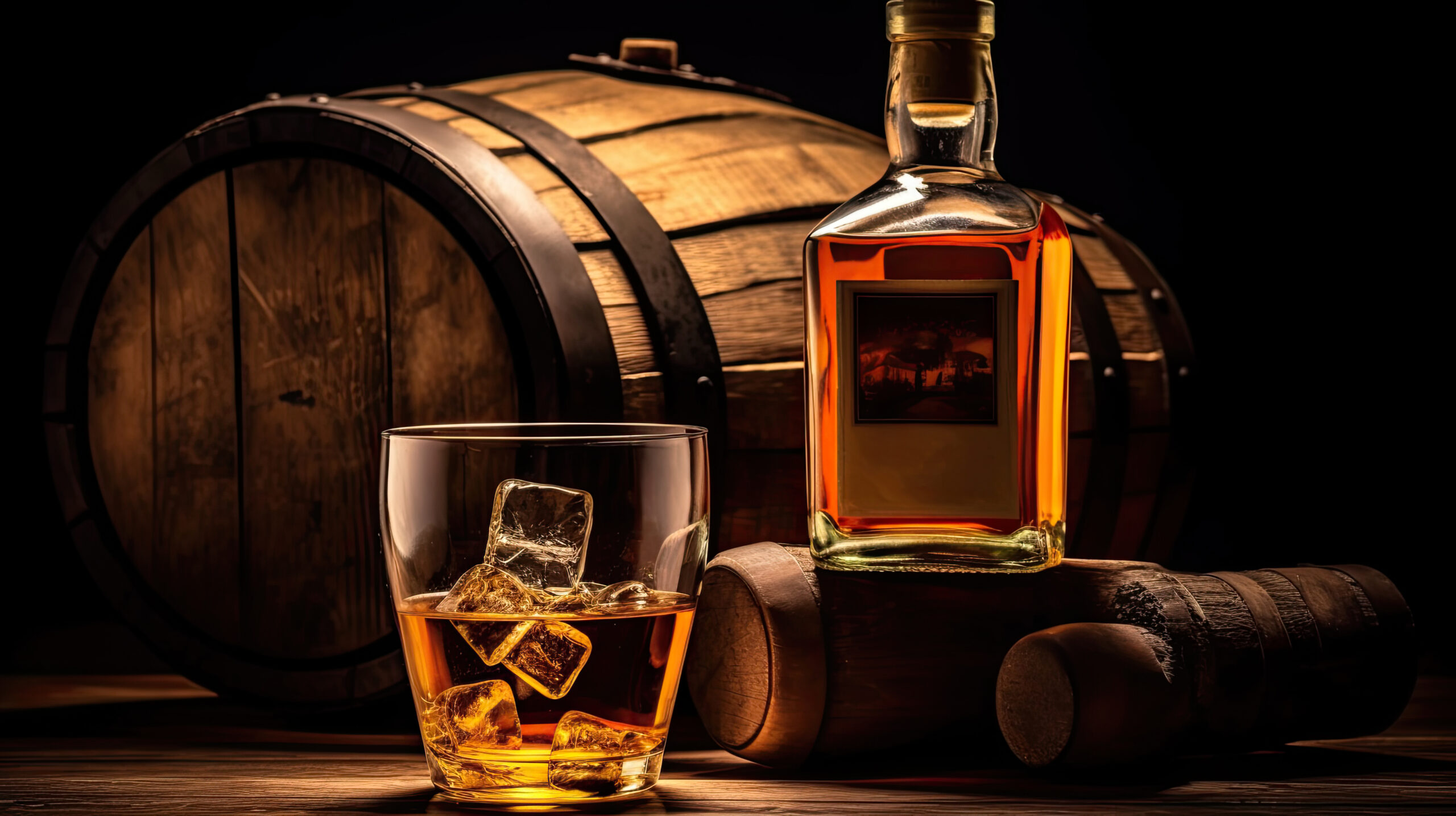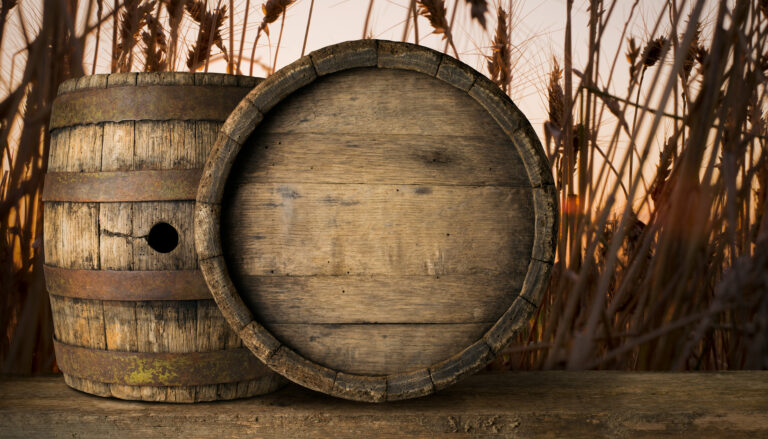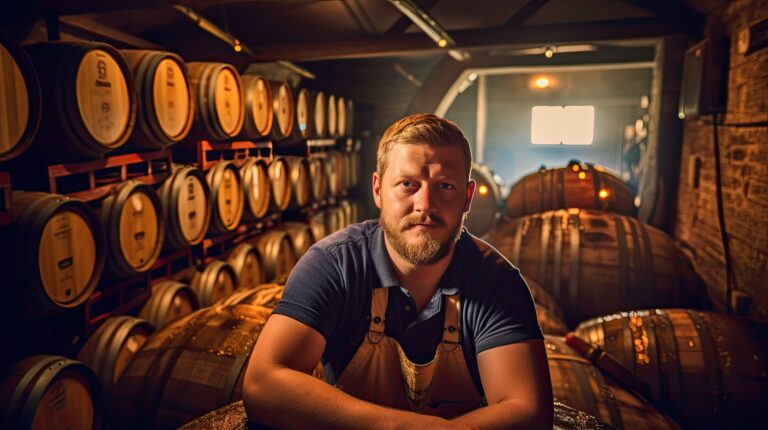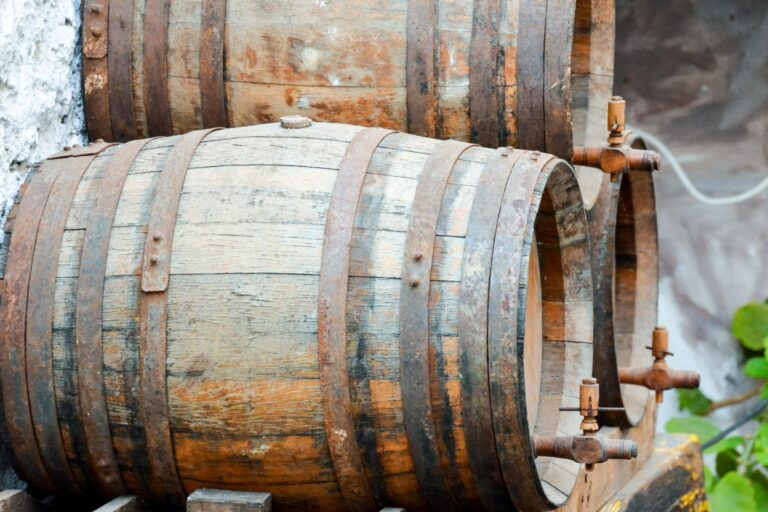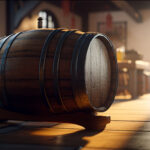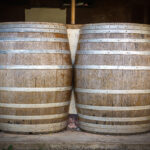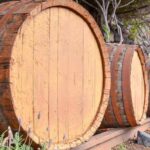Have you ever wondered why whiskey has that smooth, rich taste? It’s all about the barrel. Something magical happens as whiskey ages in charred oak. It soaks into the wood, picking up flavors and that beautiful caramel color, and developing that velvety texture we all love. You’ve probably heard about the barrel giving whiskey its amber hue and vanilla notes, but it does so much more than that. It’s what creates that luscious, almost buttery feel that coats your mouth.
The Science Behind Barrel Aging
The science of barrel aging is pretty cool. While the liquor sits in those charred oak barrels, chemical reactions take place, and these are what give aged spirits their signature smoothness and that velvety mouthfeel.
Extracting Flavor from the Wood
The wood gives the spirit flavors like vanilla, caramel, and spice. The char inside the barrel also releases aromatic compounds that mingle with the spirit. Over time, sometimes years, the liquor absorbs these flavors and aromas, which also helps to soften any harshness.
Oxidation Softens the Spirit
As the liquor sits, a little bit of oxygen gets into the porous wood, and this starts a slow oxidation process. This mellows the spirit, smoothing out any rough edges and making the overall flavor profile more rounded.
Evaporation Concentrates Flavor
A little bit of the alcohol and water in the barrel evaporates – they call this the “angel’s share.” This makes the remaining spirit more concentrated, intensifying its flavor and aroma. The evaporated water also contributes to a richer, almost oily mouthfeel.
Blending of Flavors
Lots of complex chemical reactions happen, blending the flavors of the wood with the spirit’s own flavors. Things called esters form, which create fruity notes. Lignins break down into vanillin, which gives aged spirits that warm vanilla aroma. There are hundreds of other reactions happening too, creating a whole symphony of flavors you just don’t find in younger spirits. With time and patience, all these changes work together to create a spirit with incredible depth, character, and that decadent, liquid velvet mouthfeel. It’s no wonder aged spirits are so sought after – those years in the barrel are definitely worth it!
How Oak Interacts With Spirits
After the spirit is distilled, the real magic starts inside the oak barrels. The oak interacts with the liquid in a process called maturation, and this is what gives aged spirits that signature smooth, velvety mouthfeel.
How Oak Imparts Flavor
As the spirit rests in the oak barrel, the wood releases aromatic compounds, like vanillin, which give it flavors of vanilla, caramel, and spice. The oak also adds other wood sugars that create a sweet, almost maple syrup-like taste.
The Barrel Breathes
The barrel isn’t completely airtight, so a small amount of spirit evaporates – that “angel’s share” again. This allows tiny amounts of oxygen to enter, which starts a whole chain of chemical reactions. Compounds break down and recombine, creating new flavorful esters and aldehydes that give aged spirits a fruity, nutty character.
Extracting Tannins
Tannins are what make some things taste bitter and astringent. They’re found in oak. Over time, these tannins leach into the spirit, and their bitterness fades. What’s left is a silky mouthfeel and flavors of baking spice, like clove and nutmeg. Tannins are what give aged spirits that distinctive dry finish.
The Longer the Better
While the exact time depends on things like temperature and humidity, generally, the longer a spirit ages in the barrel, the smoother and more complex it becomes. Extended aging lets the flavors fully blend and the tannins soften, creating an ultra-smooth drink.
The Effects of Char Level on Mouthfeel
The char level refers to how deeply the wood inside the barrel has been toasted or charred. This affects how much flavor and color the barrel gives to the spirit. Lighter char levels make spirits with more subtle oak and vanilla notes. As the char level goes up, the oak flavors get stronger.
- Light Toast: Just lightly browned. The oak aromas and flavors are subtle, with hints of vanilla, coconut, and a touch of spice. The spirit’s own flavors really shine through. Whiskeys aged in these barrels are usually lighter in color.
- Medium Toast: More robust oak flavors, with notes of caramel, toffee, and butterscotch. The oak is more noticeable but still balanced. Spirits aged in these barrels have a golden amber color. This is a common char level for whiskies.
- Medium Plus Toast: The staves are dark brown. The oak flavors are stronger, with aromas of roasted coffee, chocolate, and molasses. The oak influence is big and the spirit is darker, almost reddish. These heavier char levels are often used for spirits like bourbon, which are often enjoyed on their own.
- Heavy Char: The barrels are almost burnt black. This gives very strong flavors of espresso, burnt sugar, and spice. The oak flavors are very intense. Spirits aged in these barrels are very dark, almost mahogany. Only really strong spirits can handle this much oak.
The char level the distiller uses depends on the style and flavor they’re aiming for. By changing the char, they can make spirits with different oak intensities and mouthfeels, from light and smooth to full-bodied and robust. Choosing the right char is key to a balanced, flavorful spirit.
How Barrel Size Impacts Mouthfeel
The size of the barrel also makes a big difference to a whiskey’s mouthfeel and taste. Larger barrels give subtler flavors than smaller ones.
- Standard Barrels: The most common size for bourbon and whiskey. They hold about 53 gallons. These barrels offer a good balance, letting the whiskey pick up oak flavors over several years without becoming overpowered. They produce a whiskey with medium body and a mix of caramel, vanilla, and oak notes.
- Smaller Barrels: These hold between 5 and 30 gallons. They speed up the aging process because more of the spirit is in contact with the wood. Flavors are imparted more quickly, but they can also be extracted too rapidly, which can make the flavor unbalanced if the spirit is left in too long. If used for a shorter time (3-7 years), they can create a bourbon with a fuller, oilier mouthfeel and strong oak and spice flavors.
- Larger Barrels: These hold between 59 and 145 gallons. They slow down the aging process. The spirit absorbs oak flavors more slowly, creating a lighter, smoother bourbon over 10-25 years. These barrels often produce bourbon with a thinner mouthfeel, delicate oak notes, and flavors of nuts or leather.
Distillers have to consider barrel size, char level, aging time, climate, and other things to create a bourbon with the aroma, flavor, and mouthfeel they want. The barrel size has a big impact on the final character of the aged spirit.
Regional Influences on Barrel Aging
Where the barrels are made and aged has a big effect on a whiskey’s mouthfeel. Barrels from different regions give different flavors to the spirits inside.
- American Oak: Barrels made from American white oak, especially from the Ozark Mountains, are great for aging bourbon. The wood gives bourbon its characteristic sweet, smoky flavor with notes of vanilla and caramel. The tannins also help give bourbon its smooth, velvety mouthfeel.
- European Oak: Barrels made from European oak, like French and Hungarian oak, are often used for single malt scotch. These barrels tend to give more resinous, spicy flavors, with hints of clove and nutmeg. The tannins also help scotch develop a creamy, silky mouthfeel.
- Ex-Port, Ex-Sherry & Virgin Oak: Some distillers experiment with aging whiskies in barrels that previously held port or sherry, or in brand new (virgin) oak casks. Port and sherry casks give whiskies rich, fruity flavors from the wines that were previously aged in them. Virgin oak gives more intense oak flavors. Whiskies aged in any of these casks can have a fuller, chewier mouthfeel than those aged in used bourbon or scotch barrels.
The barrels a spirit is aged in have a huge influence on its final flavor and mouthfeel. Where the wood comes from, how it’s treated, and what it was used for before all affect how the whiskey develops as it ages. Distillers can create very different products by aging the same spirit in barrels from different regions and backgrounds.
The Role of Prior Fill Contents
Barrels that were previously used to age other spirits or wines (called “prior fill” barrels) give subtle flavors and aromas that affect the whiskey’s texture.
- Used Bourbon Barrels: Bourbon barrels are often used for aging single malt scotch and other spirits. Because bourbon barrels can only be used once to age bourbon (by law), distillers often sell them to scotch makers and other distillers. The bourbon-soaked wood gives scotch and other spirits creamy vanilla and caramel notes with a silky finish.
- Sherry Casks: Barrels that previously held sherry, port, or other wines are frequently used to age single malt scotch. The sherry wood gives scotch fruity, nutty flavors and a smooth, mellow mouthfeel. Many distilleries use a mix of sherry and bourbon casks to create a complex but balanced spirit.
- Toasted or Charred: How toasted or charred the inside of the barrels are also affects mouthfeel
Heavily toasted or charred barrels tend to make whiskies with a fuller, oilier mouthfeel because of the compounds extracted from the wood. Lighter toasting leads to a lighter, drier mouthfeel. Many distillers use a combination of barrel toasts to get the texture they want.
Whether you prefer a scotch aged in sherry casks or bourbon barrels, prior fill barrels play a big role in a whiskey’s texture and mouthfeel. The flavors and aromas from used barrels give whiskey a velvety smooth finish. Choosing the right barrels is both an art and a science, and it determines a lot of a whiskey’s character.
Optimal Aging Time for Smooth Mouthfeel
Aging whiskey in charred oak barrels is key to developing that smooth, velvety mouthfeel that whiskey lovers crave. Several things influence how long a spirit should age.
- Wood Type: The type of oak (American or French, for example) affects how quickly the whiskey absorbs characteristics from the wood. American oak barrels, being denser, usually age whiskey faster than French oak.
- Barrel Char: A heavier char means more surface area for the whiskey to interact with, speeding up aging. A lighter toast means slower interaction and a longer aging period.
- Barrel Size: Whiskey ages faster in smaller barrels. Whiskey in larger barrels can age for many more years to achieve the same smooth mouthfeel.
- Regional Climate: Warmer climates speed up the chemical reactions in the barrel. Whiskey aged in cooler areas may need more time to develop the same silky mouthfeel.
- Personal Preference: Some prefer a spicier, oakier flavor that develops in just a few years. Others prefer an ultra-smooth nuttiness that takes decades. Aging whiskey is a delicate balance. With experience, you’ll figure out your own optimal aging time.
Finishing Barrels for Maximum Mouthfeel
Finishing barrels are essential for giving spirits a velvety smooth mouthfeel. The time spent aging in charred oak barrels lets complex flavors develop and a silky texture emerge.
- Char Level: A medium char is ideal for an ultra-smooth mouthfeel. It provides balanced oakiness without being overpowering.
- Barrel Size: Smaller barrels tend to age spirits more quickly and develop a soft, supple texture faster. Larger barrels age spirits more slowly and tend to be less oaky.
- Barrel History: First-fill barrels impart more oak flavor. Second-fill or “seasoned” barrels have less influence. Third-fill or “exhausted” barrels provide little additional oakiness or texture.
- Climate: Warmer temperatures cause spirits to expand into the wood, absorbing more oak compounds and developing a rounder, fuller mouthfeel. Cooler conditions slow this interaction.
The time spent in the barrel and the specific characteristics of the barrel are instrumental in crafting a spirit with an unparalleled silkiness.
Frequently Asked Questions About Barrel Aging and Mouthfeel
Barrel aging raises some common questions about how it influences mouthfeel.
How does barrel aging make whiskey taste smoother?
It absorbs flavors and aromas from the wood, giving it a rounder, mellower taste. The harsh edges of new distillate are tamed, resulting in a smooth mouthfeel.
Does barrel aging increase viscosity?
Yes, a little. Water and alcohol evaporate, slightly increasing the concentration of certain compounds, which can make the whiskey feel slightly thicker. However, barrel aging primarily mellows and softens whiskey.
Does higher proof mean more burn?
Not always. While higher alcohol content can make a whiskey feel hotter, other compounds also influence burn. Barrel aging reduces these, which can balance out some of the burn from the extra alcohol.
Does chill-filtering reduce mouthfeel?
Chill-filtering can make whiskey feel slightly thinner in the mouth, but the difference is usually subtle.
Barrel aging, alcohol content, certain compounds, and chill-filtering can all affect how whiskey feels in your mouth. But when done right, barrel aging creates an incomparably smooth and velvety mouthfeel.
Final Thoughts
The secret to that signature smooth and velvety mouthfeel is all in the barrel. The wood breathes life into the spirit, giving it complex flavors and a texture you can’t replicate any other way. The next time you take a sip, appreciate the subtle oak notes, the lingering finish, and that luxurious mouthfeel. It’s all thanks to the quiet work of a simple barrel. It’s amazing that such a simple vessel yields such an extraordinary result. Now you know – it’s the barrel that makes all the difference.
